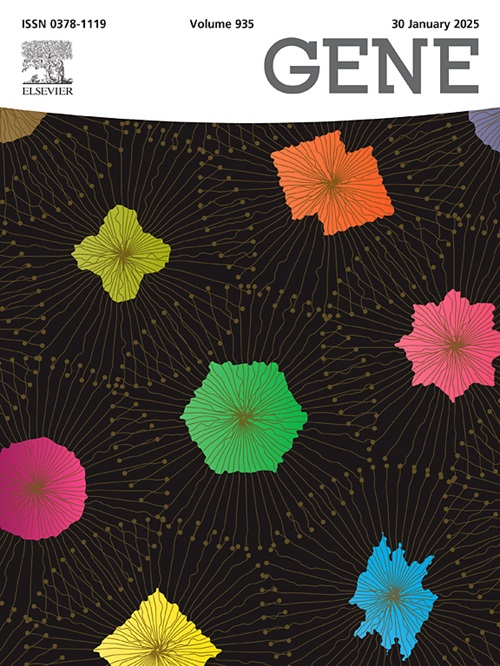一个新的PI*S-plus型SERPINA1空等位基因:PI*Q0Tegueste
IF 2.4
3区 生物学
Q2 GENETICS & HEREDITY
引用次数: 0
摘要
SERPINA1基因的某些变异导致α -1抗胰蛋白酶缺乏症(AATD)。无SERPINA1等位基因导致循环AAT完全缺失,这增加了aatd相关呼吸系统疾病的严重程度。PI*S +等位基因是PI*S等位基因与另一种变异的顺式组合,这种变异赋予单倍型更多有害的特征。方法对51岁有呼吸道症状、血清AAT水平低(51.6 mg/dl; 9.9µmol/L)的女性进行实时PCR分型和标准PCR - Sanger测序分型。AAT表型由等电聚焦测定。使用长读测序进行单倍型分相。RT-PCR检测SERPINA1的表达。结果尽管该患者为S变异杂合,但表现为PiM表型。遗传分析显示,SERPINA1外显子2存在一个杂合的8 bp重复(c.250_257dup),导致编码区移码并出现一个过早停止密码子(p.Met87Profs*21)。长读测序结果显示,该变异与S变异同源,产生一个新的PI*S +零等位基因,命名为PI*Q0Tegueste。RNA分析显示该等位基因的转录本缺失,表明通过无义介导的mRNA衰变进行降解。结论PI*Q0Tegueste是一个新的PI*S-plus零等位基因,通过降解SERPINA1 mRNA导致AATD。我们的发现强调了标准基因分型和单倍型重建相结合对于准确诊断AATD的重要性,特别是当检测到有害变异的复合杂合时。本文章由计算机程序翻译,如有差异,请以英文原文为准。
A new SERPINA1 null allele of the PI*S-plus type: PI*Q0Tegueste
Introduction
Certain variants in the SERPINA1 gene cause Alpha-1 antitrypsin deficiency (AATD). Null SERPINA1 alleles result in the full absence of circulating AAT, which increases the severity of AATD-related respiratory illnesses. PI*S-plus alleles are the combination in cis of the PI*S allele with another variant that confers more deleterious features to the haplotype.
Methods
A 51-year-old woman with respiratory symptoms and low serum AAT level (51.6 mg/dl; 9.9 µmol/L) was genotyped by real-time PCR and by standard PCR coupled to Sanger sequencing. AAT phenotype was determined by isoelectric focusing. Haplotype phasing was performed using long-read sequencing. SERPINA1 expression was analyzed by RT-PCR.
Results
Despite the patient was heterozygous for the S variant, exhibited a PiM phenotype. Genetic analysis revealed a heterozygous 8-bp duplication (c.250_257dup) in SERPINA1 exon 2, causing a frameshift in the coding region and the appearance of a premature stop codon (p.Met87Profs*21). Long-read sequencing revealed that this variant was found in cis with the S variant, yielding a novel PI*S-plus null allele, designated PI*Q0Tegueste. RNA analysis showed the absence of transcripts from this allele, indicating degradation via nonsense-mediated mRNA decay.
Conclusion
PI*Q0Tegueste is a novel PI*S-plus null allele causing AATD through degradation of SERPINA1 mRNA. Our finding highlights the importance of combining standard genotyping and haplotype reconstruction for accurate AATD diagnosis, especially when a compound heterozygous for deleterious variants is detected.
求助全文
通过发布文献求助,成功后即可免费获取论文全文。
去求助
来源期刊

Gene
生物-遗传学
CiteScore
6.10
自引率
2.90%
发文量
718
审稿时长
42 days
期刊介绍:
Gene publishes papers that focus on the regulation, expression, function and evolution of genes in all biological contexts, including all prokaryotic and eukaryotic organisms, as well as viruses.
 求助内容:
求助内容: 应助结果提醒方式:
应助结果提醒方式:


